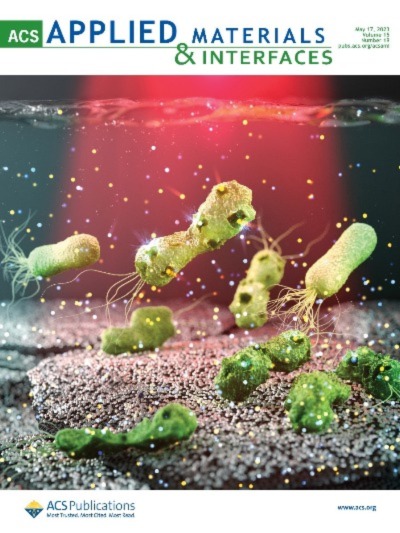- 글번호
- 949878
Professor Jung Tae Park, Published a cover paper in a world-renowned academic journal in the field of chemical engineering
- 작성자
- 관리자
- 조회수
- 6868
- 등록일
- 2023.05.30
- 수정일
- 2024.02.29
A joint research team (Figure 1) led by Professor Jung Tae Park of the Department of Chemical Engineering at the Konkuk University and Professor Inhee Choi of the Department of Life Sciences at the University of Seoul has developed a new photoactive nano-antibacterial agent based on the Metal-Organic Framework (MOF).
In particular, a research team of the Department of Chemical Engineering at the Konkuk University (Prof. Jung Tae Park, M.S. candidate Kun Woo Park) prepared a binary metal nanocomposite of cobalt and silver by introducing silver nanoparticles on the MOF surface using a cobalt-based MOF.
MOF is composed of metal ions and organic linkers and is in the spotlight as a next-generation materials due to its large specific surface area, porosity, and electrical properties. The silver nanoparticles are synthesized on MOF through Nanoscale Galvanic Replacement (NGR), a composite with both the characteristics of MOF and the characteristics of silver nanoparticles can be easily obtained. In addition, the NGR technique proposed by the research team is an environmentally friendly process because it can minimize the use of toxic chemicals and the experimental stage.
A research team of the Department of Life Sciences at the University of Seoul (Prof. Inhee Choi, and M.S. candidate Doyun Kim) processed the nano composite’s effect, which was introduced by the elasticity of nano composite. This is evaluated as a representative example of bio convergence studies applied in life science field science field.
The Photothermal conversion effect is a phenomenon in which when a certain wavelength of light is irradiated on a plasmon metal nanoparticle such as gold or silver, the surface electric field formed by the Localized surface plasmon resistance absorbs the energy of the irradiated light and converts it into heat. This phenomenon can be used to effectively treat certain cancer tissues or infected areas without inducing antibiotic and antibacterial resistance through photothermal conversion treatment.
The research team effectively improved antibodies from this light heat conversion effect and the nanostructure from nano composite, and particularly, especially the spread of bacteria through light heat transition.
This study was conducted with the support of the research foundation's mid-career research projects conducted by each of the two research groups.
The study was published as the cover paper of the latest issue of the journal 'ACS Applied Materials and Interfaces (Volume 15, Issue 19, Page 22903)', a prestigious international journal in the field of chemical engineering materials. (Figure 2)
(논문링크: https://pubs.acs.org/doi/10.1021/acsami.3c01529)
Figure 1

Figure 2
